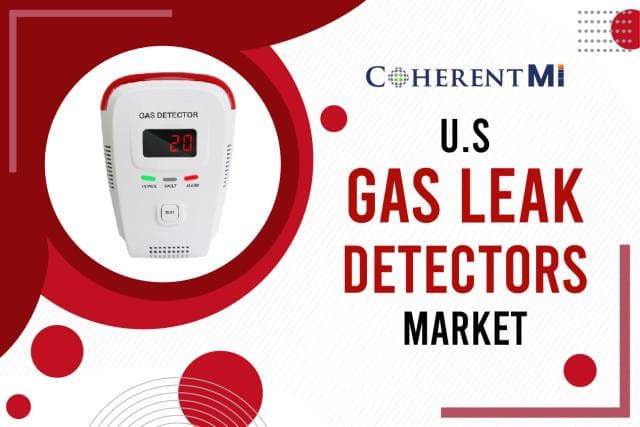There are several key technologies used for gas leak detection in the US. The most common include:
Infrared gas detectors work by emitting an infrared beam and measuring the amount of light absorbed by a gas. Different gases absorb light at different wavelengths, allowing an IR detector to identify the type of gas present. IR detectors can sense various combustible and toxic gases such as carbon monoxide, methane and hydrogen sulfide. They have quick response times but may struggle in dusty environments.
Electrochemical gas detectors contain one or more electrochemical cells which produce a voltage in the presence of a target gas. The voltage level indicates the gas concentration. Electrochemical sensors can detect gases like carbon monoxide, oxygen and hydrogen sulfide at low cost. However, their lifespans are often shorter than other technologies.
Catalytic gas detectors work on the same principles as electrochemical models but use a catalytic bead instead of an electrochemical cell. The bead causes an oxidation reaction when exposed to combustible gases like LPG and generates a voltage proportional to concentration. Catalytic detectors are affordable and suitable for detecting a variety of flammable gases.
Photoionization detectors (PIDs) use a UV light source to ionize gas molecules entering the sensor. The number of ions produced corresponds to concentration levels. PIDs can identify many VOC gases but their bulky size limits portability. Multi-gas and combustible gas detectors often integrate PID technology.
Fixed Gas Detection Systems
Commercial and industrial facilities commonly rely on fixed gas detection systems for 24/7 monitoring. These hardwired networks install gas sensors at strategic points and connect to a central control panel. If gas is sensed above preset alarm thresholds, the control panel triggers audible/visual alarms and automatically shuts off gas lines and equipment.
Fixed detectors provide round-the-clock protection with little user input required. Common installation sites include gas stations, laboratories, wastewater plants, compressor stations and oil/gas processing facilities. Sensor cables run throughout a site, allowing placement virtually anywhere. Wireless options also exist for retrofitting older buildings.
Portable Gas Detector Models
Small, rechargeable portable gas detectors fit in a user's hand and provide on-demand monitoring during facility checks, confined space entry or emergency response. Single-gas models focus on a particular threat like methane or hydrogen sulfide, while multi-gas detectors identify three or more.
Entry-level portable detectors provide basic leak detection and alarm notifications. Higher-end professional models offer expanded sensor options, datalogging of readings, and integrated gas pumps to actively draw in samples from enclosed spaces. Intrinsically safe designs can be used in hazardous conditions without risk of initiating an explosion.
Portable detectors empower workers to routinely assess gas hazards and quickly respond to leaks that fixed systems may miss. They also facilitate remote inspections of difficult-to-access areas inside processes and machinery.
Regulatory Compliance and Safety Standards
Government agencies oversee gas detector usage through product certifications and workplace regulations. In the US:
- OSHA mandates gas monitoring in certain high-risk industries to ensure compliance with Permissible Exposure Limits (PELs).
- NIOSH evaluates and approves detector sensors for performance against specific gas types.
- MSHA regulates mining sector gas monitoring under standards like 30 CFR Parts 7 and 75.
- The EPA oversees fuel storage sites under Spill Prevention, Control and Countermeasure rules.
Consensus organizations like UL, FM and CSA test detectors to standards such as UL 913 intrinsic safety and CSA C22.2 for Canadian compliance. Detectors sold commercially must typically meet expectations for accuracy, response times, environmental resilience and other metrics. This ensures they reliably protect workers as intended by regulations.
Gas Detector Maintenance and Training
Proper maintenance plays a crucial role in gas detectors achieving their expected lifespan. This includes regularly scheduled functional checks, sensor replacement according to lifespan expectation, and bump testing with gas prior to each day's use. Professional technical support from manufacturers aids compliance.
Employees who use gas detectors also need thorough training. This covers understanding different sensor technologies, activating alarms, maintenance responsibilities like battery charging/replacement, and correct response if an exposure occurs. Regular drills keep response skills sharp. Where required, official certification or refresher courses document competency. Together, detector maintenance and user training defend workplace safety.
In summary, gas detectors deploying varied sensor technologies offer vital protection against unseen hazards through comprehensive monitoring solutions for both permanent installations and portable usage. Strict regulatory compliance and adherence to safety standards by all parties involved helps guarantee detectors safely alert workers to leaks as intended.
